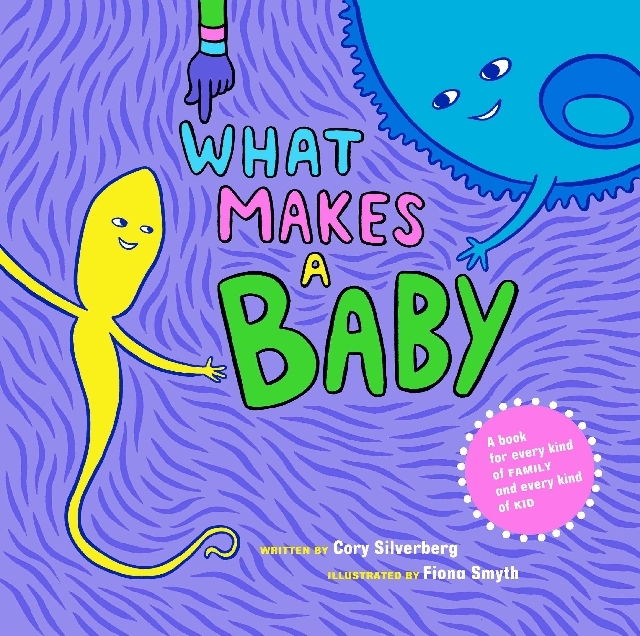‘What Makes a Baby’ makes ‘The Talk’ easier on tykes

Something really exciting is happening at your house.
Mom and Dad told you last week that you’re going to have a new little brother or sister soon, and you’re really looking forward to it! You can’t wait to play trains with your baby brother or dress your new sister up in tiny clothes.
It’s going to be a lot of fun, but it also makes you wonder where babies come from. In the new book “What Makes a Baby” by Cory Silverberg, illustrated by Fiona Smyth, you’ll find out.
You’re really good at drawing pictures and making towers with your blocks, but you can’t make a baby out of just any old thing. You have to start with an egg and a sperm when making a baby.
Eggs and sperm are pretty special. Inside each egg, there’s a story about the person that the egg came from. The sperm is the same way: it contains a story, too.
Not all bodies have sperm. Not all bodies have eggs. So when grown-ups want to make a baby, they use an egg from one person and a sperm from another person and they put them in a warm, safe place. That place is called a uterus, and even though it has the words “YOU” and “US” in it, not every body has one of those, either.
When an egg and a sperm get together in the uterus, they do a sort of dance, and they talk to each other and share those stories about the bodies they came from. By the time the dance is done, they’re not an egg and sperm anymore — they’re a brand-new, tiny thing that might or might not grow. If it does, it becomes a baby just like you were a long time ago.
Inside, a baby grows… and grows… and grows for about 40 weeks until it’s ready to be born. Sometimes, the baby comes out on its own, and sometimes a doctor decides when it’s time — but no matter how it arrives, it’s a pretty big deal for the baby and for the people who were happy for it to arrive. And one of those people who are happy to meet the baby is you!
So your wee one knows that somebody’s going to have a baby… but you haven’t had The Talk yet. “What Makes a Baby” makes the conversation a little bit easier.
Using ideas that are easy for smaller kids to understand Silverberg tastefully explains how babies are conceived and born — and while the story itself is quick to read, the brightly colored illustrations by Smyth will make kids want to linger on each page. Those illustrations are, in fact, my favorite part of the book because they oh-so-subtly touch upon kids and families of all kinds. That inclusion means a fresh take on an age-old story.
If your child is full of questions, make sure you’ve got this cute book around for easy answers. For curious 3- to 6-year-olds, not having “What Makes a Baby” is inconceivable.
View publishes Terri Schlichenmeyer’s reviews of children’s books weekly.